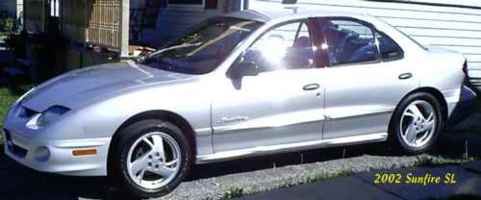I was wondering if there's a good way to check how much wear is on the clutches in our cars (Getrag trans) other than waiting for it to start slipping. I've looked in through the hole at the bottom of the bellhousing, and I can see the outside of the clutch, but I'm not sure if part of what I'm seeing is the friction materials or not. I haven't had one of these apart yet to be familiar with how it looks outside of the car. If this IS the material that I'm seeing - how thin can it get before becoming a problem? I would just like to be able to get a general feel of how much life is left there, so that perhaps I can plan on when to "expect" to run into a problem.
I tow my boat occasionally with the car, which puts a pretty good load on things (around 1,000 pounds - or maybe slightly more when loaded). I just don't want to get a couple of hours from home with it and have the clutch self-destruct on me. So far it's been grabbing just fine - but I'm pretty sure that the point in the pedal travel where it starts to engage is a bit higher than when new (about 2/3 of the way up now). The fluid in the reservoir for the clutch has also dropped maybe 1/2 inch since new. I'm currently at 220,000km (about 136,000 miles). Admittedly, the majority of that is highway driving, but it's been through its share of stop-and-go crap too, as well as the towing part. I try to take it easy most of the time, as I don't look forward to any type of repairs, and it helps to keep gas costs down.
If anybody has any info that may be useful, or maybe has a photo of a clutch assembly not currently installed, I would really appreciate the input.
Thanks,
John

Put it in third, pull the ebrake, hold the brakes, hop off clutch.
If the car dies the clutch isn't slipping.
It's a hack way to check but without taking it apart there isn't an easy way I know of so I do that on occassion

I used to race cars, now I race myself.
5K PB: 24:50
10K PB: 54:26
I've never detected any kind of slipping to date - I figure that when it starts to do that, it's already a little late. I'm just trying to figure out if there's anything I can inspect visually to see how it's doing. I just towed with it yesterday, and I had to keep pretty hard into the throttle a couple of times on hills with no sign of slippage, so at least it appears to be working fine right now. I have to rely on the car for a commute of about 60km (37 miles) each way to work daily, so I like to try to "plan" any substantial work to times when it's convenient. At least I've only had to have one nasty job done so far (cylinder head rebuild), that affected me for two days - other than that it's been great so far. About all I've had to do is front brakes, plugs, wires, and fluid/filter changes as required. Pretty cheap, reliable ownership for the last 6.5 years...

Why the @!#$ would any EVER tow with a J-Body. The dinky motors and weak ass trans' are not designed for any kind of hauling.

I used to race cars, now I race myself.
5K PB: 24:50
10K PB: 54:26
Why would somebody tow with a J-body? Perhaps it's because that's what we OWN, and if I have something I NEED to tow, then that's what I've got to use! I'm certainly not alone here either - I've seen many others on the road over the years doing this also - and I'm sure that hitches wouldn't be manufactured for our cars if nobody bought them.
Not all of us want to have a thirsty fuel-sucking truck around on a daily basis so that we can occasionally tow a light trailer. You can buy a Pontiac Vibe with a 1.8 that's rated to tow 1,500 pounds. If you go to Europe, I'm sure you'd find that a 2.2 would not be considered a "dinky" motor, and I'm sure that people tow with much less under the hood. They've been used to the higher fuel prices for some time now, and have learned how to deal with it.
Obviously, it's not like you can tow without noticing a vast difference in performance, but it CAN do it. It actually has less of a struggle than some of the much older cars I owned in the past that had inline 6 cylinders in them. I just make sure that I treat it with respect when I'm placing the extra stress on it. I've probably used it for towing about 5,000-6,000km out of the 220,000 I've put on it to date, and it's still performing adequately, so I don't think I've hurt it too much. It uses no oil, and the gas mileage is still excellent. On my last tank which included some towing, and a fair bit of poking around town, I still managed to average 6.3L/100km (or 37 MPG in the U.S.). I've averaged between 6.2 and 6.7 over the last several tanks, so this wasn't some strange miscalculation.
I was looking for useful information on how to potentially inspect my clutch - not be criticized on how I use my car.
John

I've never found that "inspection hole" on the bottom of the drivetrain to be particularly useful... you can't see anything well enough to tell if it's wearing out, and you can't get anything in there to actually measure the thickness on the clutch disc... so... pretty useless.
I've got some pics around here of what the clutch looks like apart, I'll have to find them for ya.







